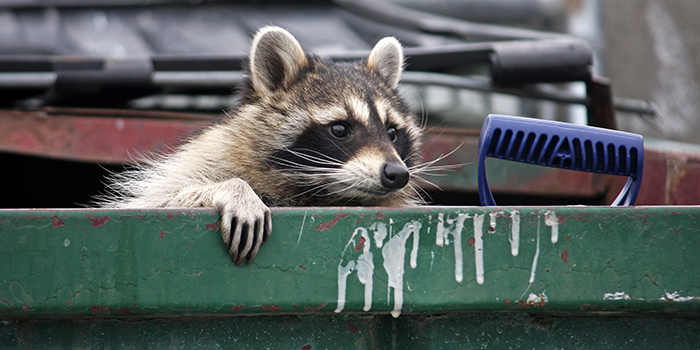Raccoons are a common sight to see in many urban and suburban backyards, especially if there is uncovered trash, pet food, or other food available. Most people assume that raccoons will pretty much eat anything, but in fact, these interesting critters have some fascinating eating habits.
At Skedaddle Humane Wildlife Control, our team understands the habits and behavior of raccoons and other wild creatures that may visit your yard. We specialize in knowledgeable raccoon removal that uses animal behavior expertise to safely remove critters from your home and yard. Here are three interesting raccoon eating habits you may not know.
1. Raccoons Wash Their Food
One unique behavior that raccoons are known for is washing their food before eating it. If raccoons are near a water source, they may dip their food into the water right before chomping down. To people without raccoon or animal behavior knowledge, this may look like they are washing off the dirt and debris, but there’s actually something else going on.
When raccoons dip their food into the water, they are actually trying to get more details about what they are eating. Humans generally use their eyes to get an idea about what type of food is on their plate. Raccoons use their sense of touch, primarily through their paws. When they dip their paws into the water, it makes their paw’s nerve ending more sensitive, and better at understanding their meal.
2. They Go Crazy for Corn
Another interesting fact about raccoons and their eating habits has to do with corn. Farmers with cornfields have struggled with raccoons eating their crops for decades. They seem to especially love sweet corn and have a talent for detecting when the corn is ripe and ready.
Raccoons eat a varied diet as omnivores. In most cases, they are opportunistic feeders and will take whatever they can find, including ears of delicious sweet corn. They also enjoy insects, nuts, fruit, vegetables, frogs, fish, clams, snails, dead animals, and trash. Dog food and cat food are also items that a hungry raccoon will eat.
3. They Make a Mess With Their Food
Another characteristic of raccoons is that they are messy eaters. In the wild, raccoons aren’t necessarily messier than other creatures. When there is a raccoon problem in an urban or suburban area, they may appear to be messy because of their ravenous eating habits.
Raccoons often eat from residential garbage cans. They usually will knock over trash cans and chew through the plastic trash bags to get to the food inside. These hungry critters will rummage through the garbage to get to something they can eat. They also may dig through lawns and gardens to get to bugs, fruit, or vegetables, leaving a messy trail behind.
Raccoon Latrines
Despite the fact that raccoons can leave a mess behind after they eat, their bathroom habits are a little more organized. Groups of raccoons often defecate and urinate in the same spot, kind of like a raccoon latrine. If you have a raccoon infestation in or around your home, a latrine may be found near a tree, attic, basement, deck, or garage.
Raccoon Removal You Can Count On
Any type of animal infestation needs to be dealt with by a professional service skilled in wildlife control in Milwaukee. Skedaddle Humane Wildlife Control can help homeowners identify and remove a raccoon infestation on their property. These interesting creatures can bring disease and chaos to your home, so it’s best to act quickly.
Contact Skedaddle Humane Wildlife Control if you see signs of raccoon activity around your property, such as torn-up trash bags, dug-up gardens, or droppings. Let us take care of the raccoon problem safely and efficiently with raccoon removal.



